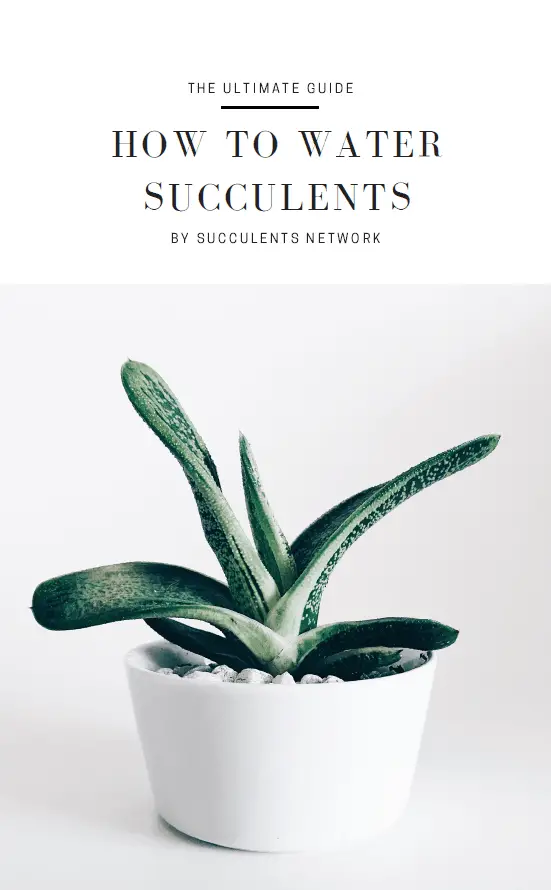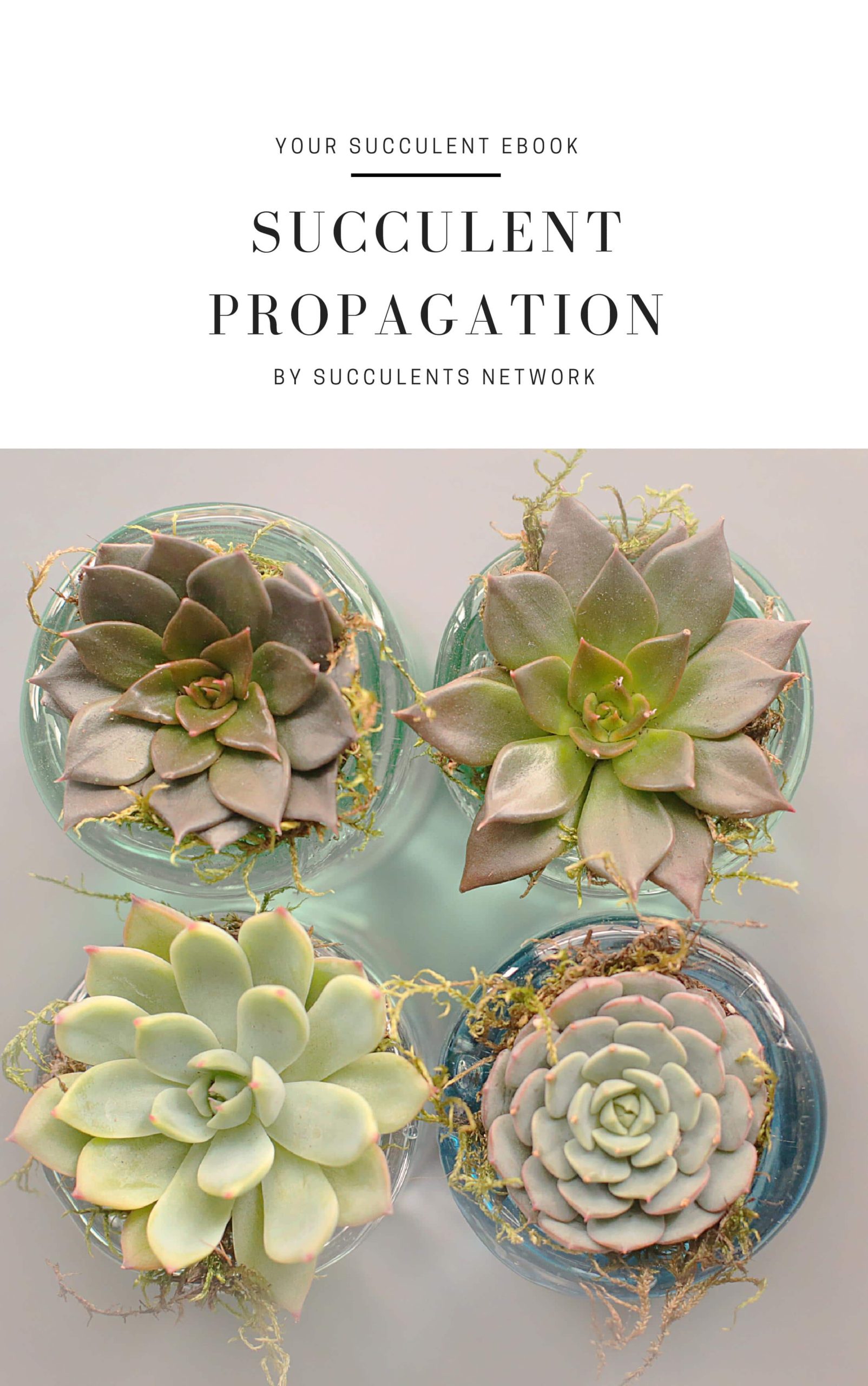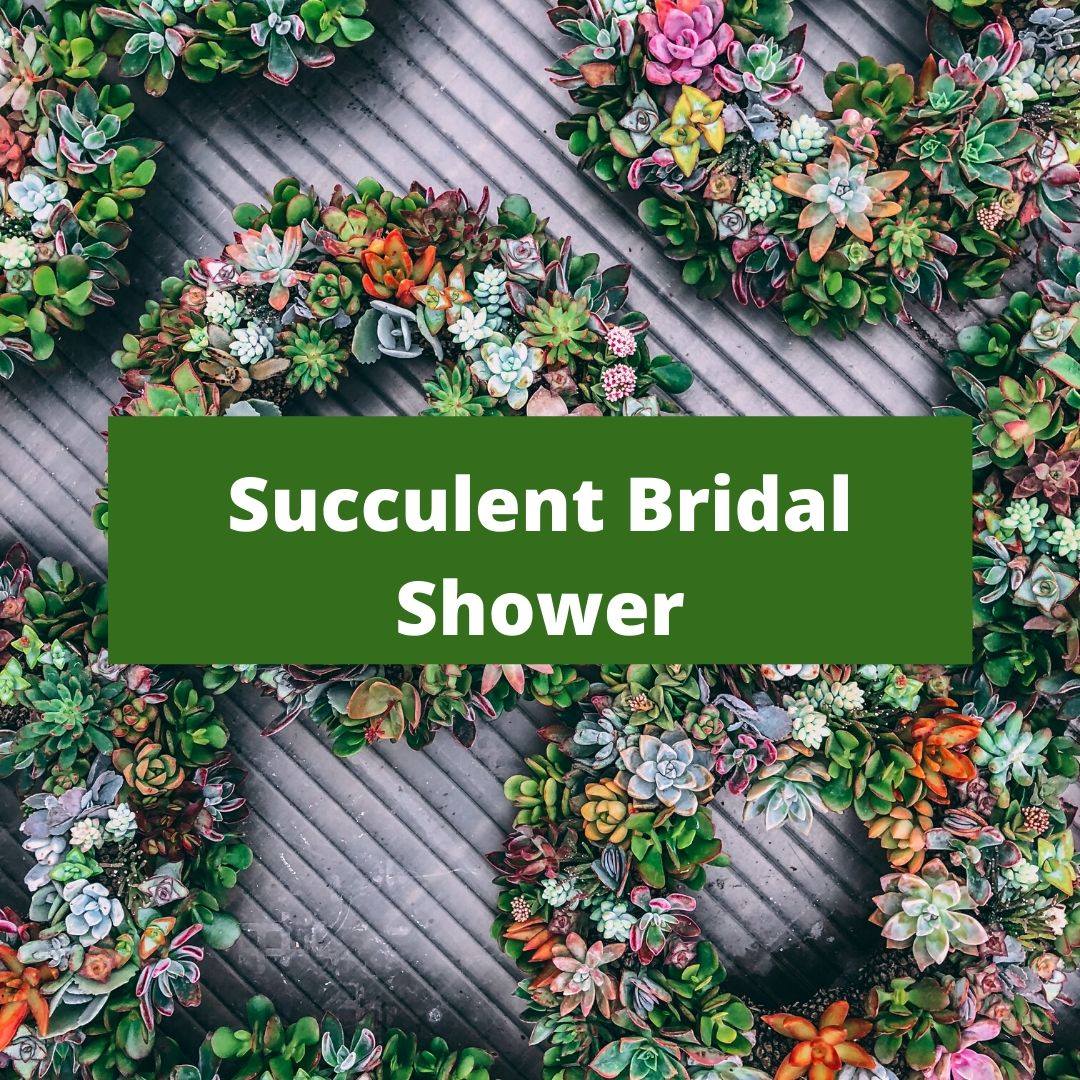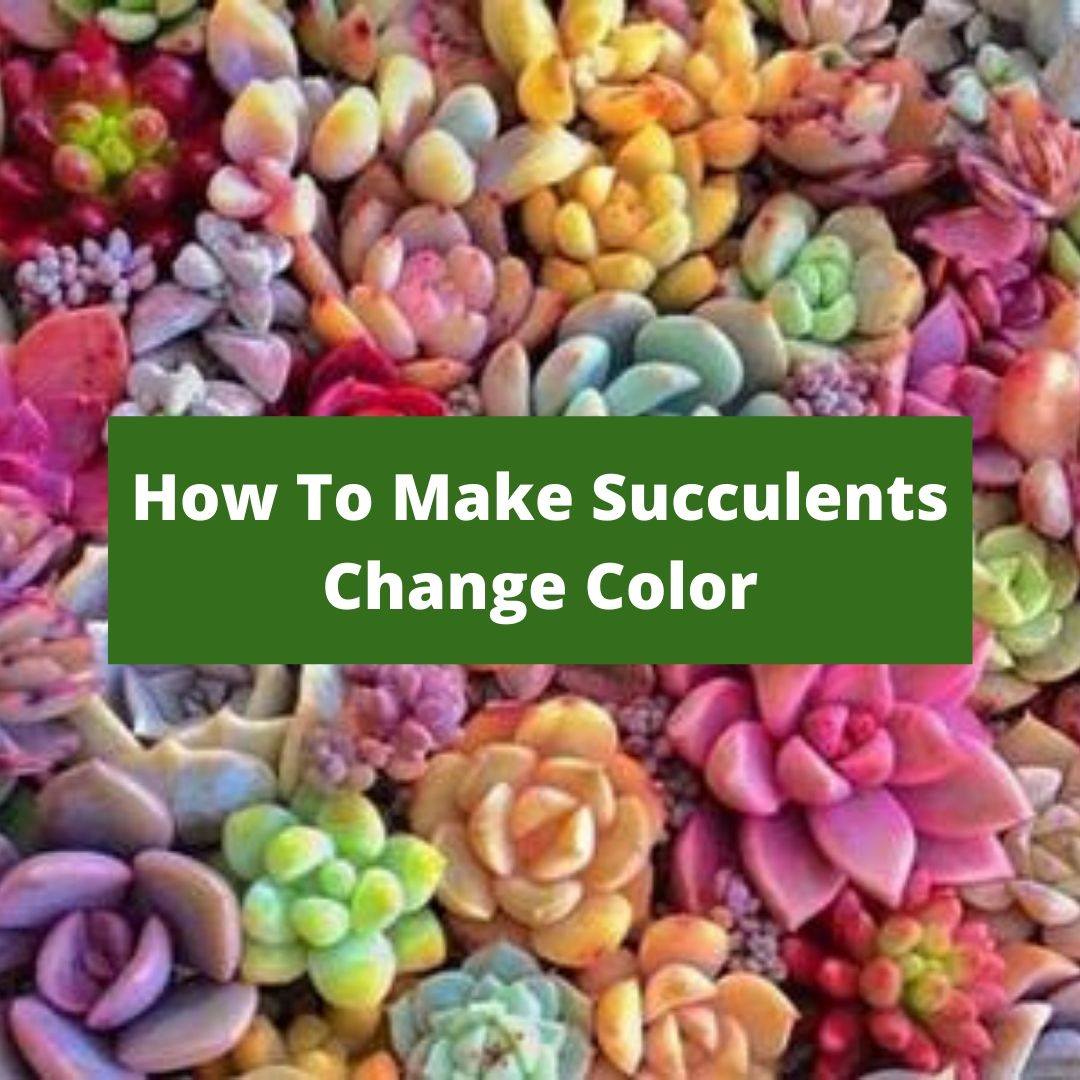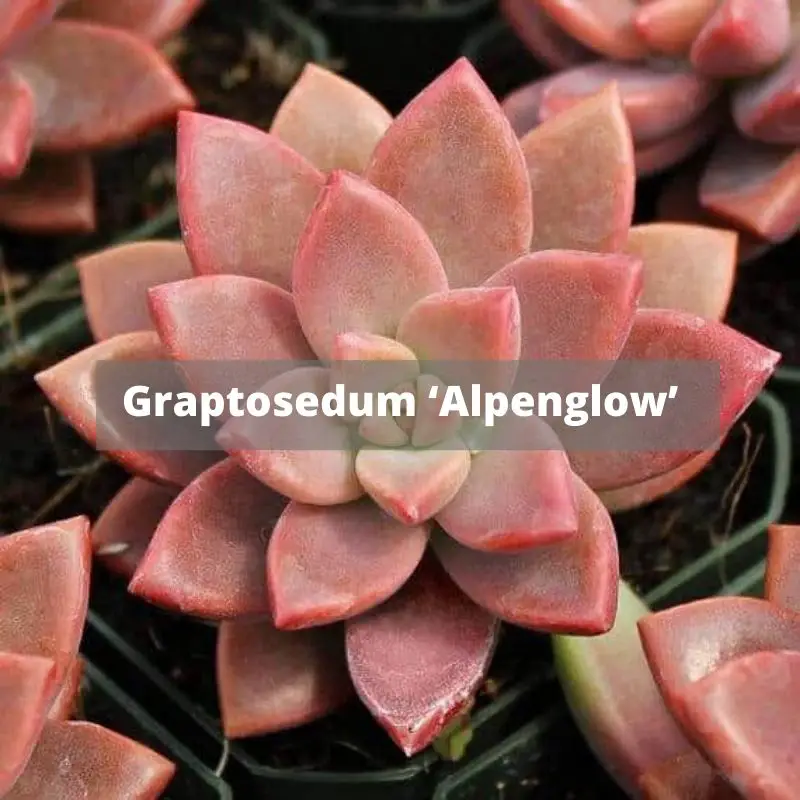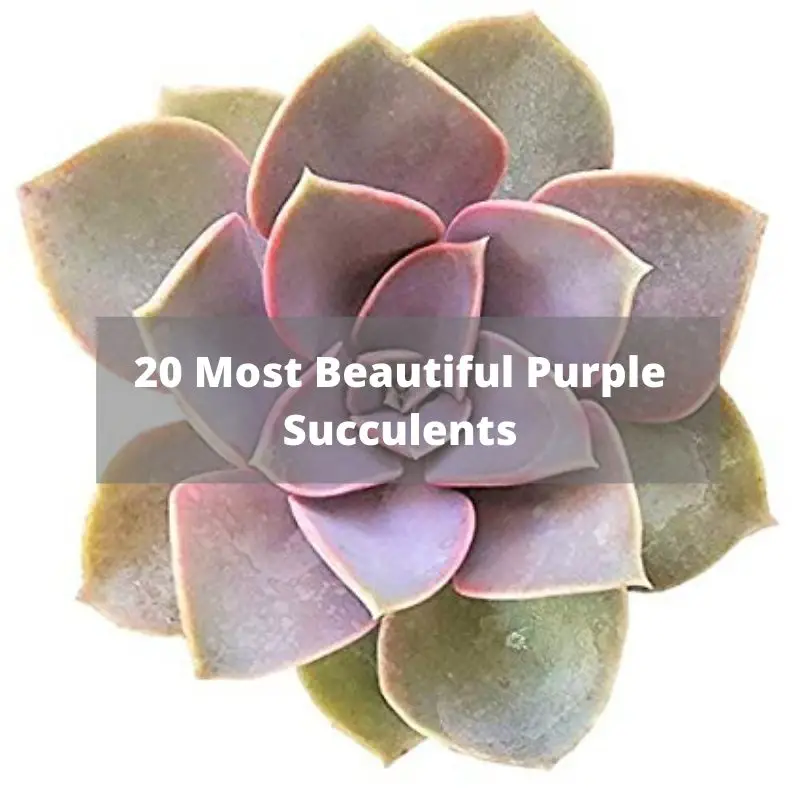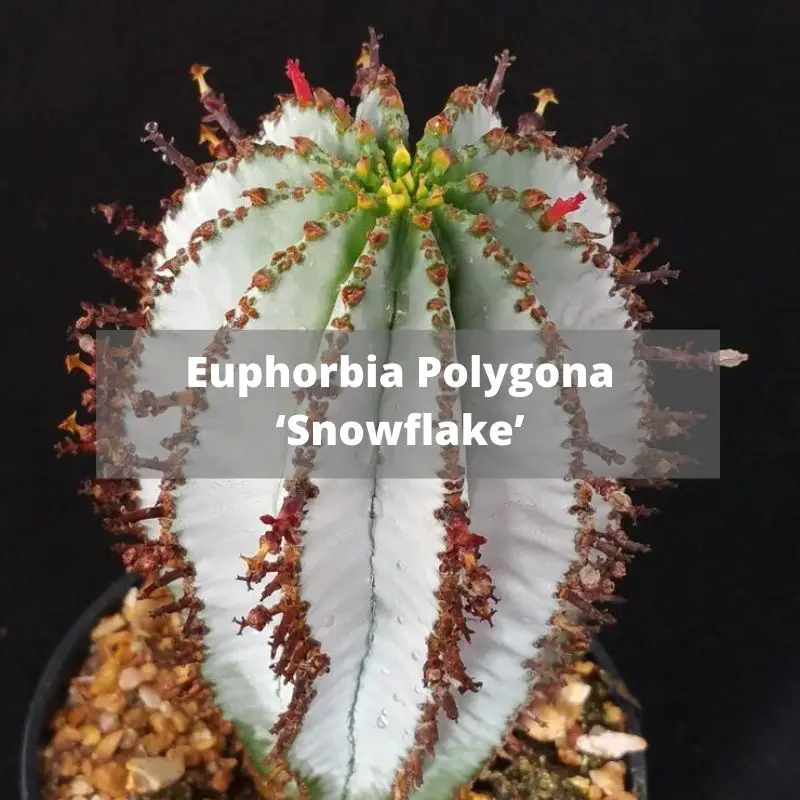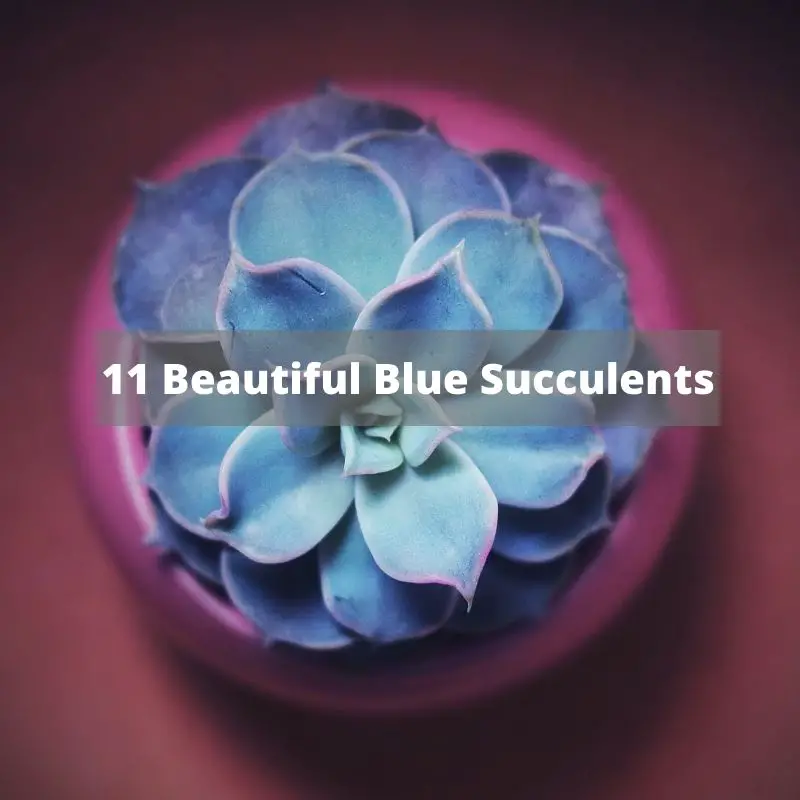So you are leaving your plants ay home while you are on vacation. You have made all your plants, packed your bags, and made all the final preparations before heading out, but what will you do about your hose plants? Maybe you have a friend or a family member that can come over and water your plants while you’re gone, or perhaps you don’t. In this article, we will talk about in great details how you can find the best indoor watering system so that your indoor plants can survive while you’re on a vacation.
So read on, If you want to enjoy your holliday with your friends or family while remaining confident that when you come back, your plants are still healthy and vibrant rather than withering and stressed out from neglet. Now let’s explore the best Indoor Plant Watering System for you.
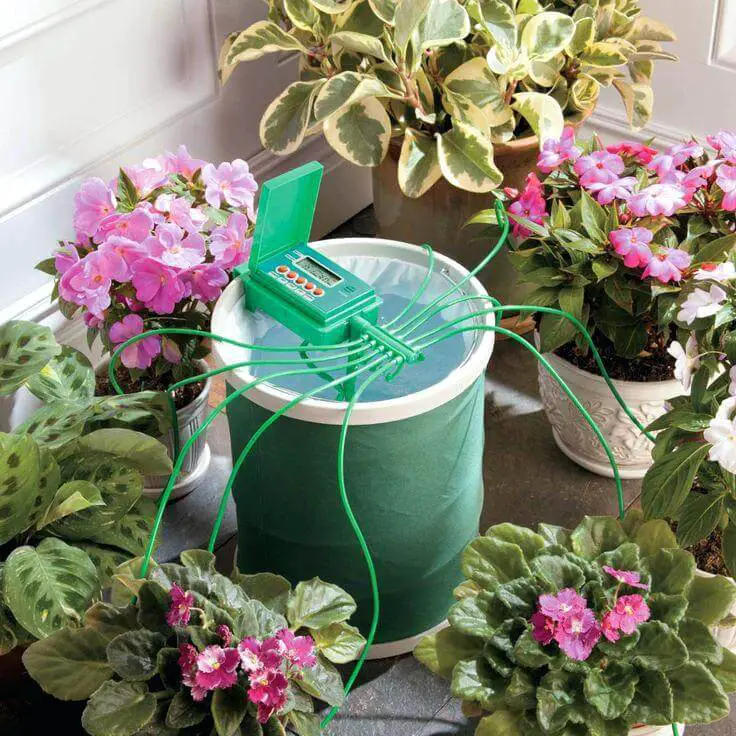
Picture via electricaltechnology
Types Of Self Watering System For Plants
If we want to become indoor gardeners, the first thing we need to do is understand what options are available to us. This way we can choose a method that has advantages and disadvantages that are properly in line with what we are looking for. This means, for example, if we don’t want to risk clogs, we could avoid using methods that involve pumps. However, if we live in an area where we have a hard time controlling the amount of light in our environment, we might find ourselves looking to a system that uses a pump rather than one of the simpler ones like a deep-water culture in which light regulation is also important.
Each of these systems offers unique advantages and disadvantages from which we can choose. But this does not mean that one particular system is better than another. Like most things in life, the choice of which Indoor Plant Watering System to use should be based on your schedule, needs, and abilities. For this reason, I won’t be extolling the virtues of any one particular system. Instead, we will look at the most popular systems around to see what their benefits are and what their disadvantages are. This way, you will have the knowledge necessary to choose the type that is right for you.
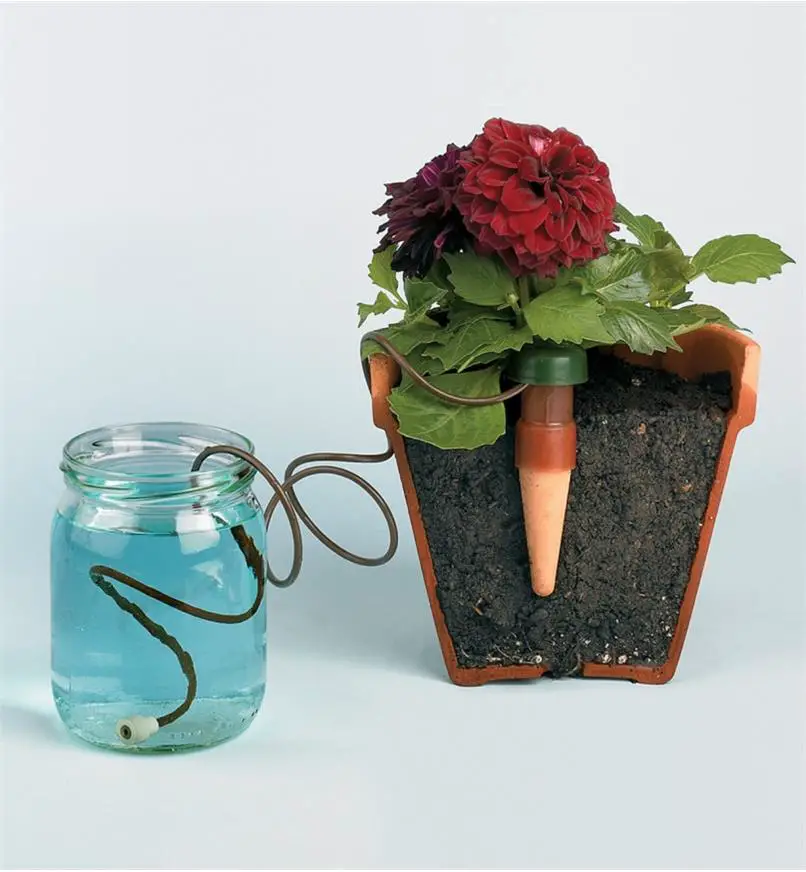
Picture via leevalley
How To Water Plants While Away Using A Drip system
This system is one of the most popular indoor setups, but it was actually invented for outdoor gardens in Israel. At its most simplified, the drip system uses a pump to keep a drip of nutrient-rich water feeding our plants. The slow drip, rather than the typical spraying of water we see in gardens, allows for less water to be used.
Typically, a drip system is designed with two key parts. The first is the reservoir of nutrient-rich water that will feed the plants. Above this rests the grow tray in which our plants are potted. A pump is set up in the water and is connected up into the grow tray. From there, each of the plants will be given their own drip line. This means if you are growing four plants in your tray, you will use four drip lines. Sixteen plants, sixteen drip lines. However, because we want to give the growing medium (that substance you use to replace soil), time to breathe, so as not to drown the plants, these drips will use a timer system. The growing medium will slowly release the water back down into the reservoir, creating a closed system.
A drip system offers us great control over the amount of water and nutrients that our plants are getting. With this system, we are able to control the drip both by the quantity and by length. This means if we use too much water in our drip, we can dial it back; or, if our drip is going too long or too short, we can adjust the timers that we are using to experiment until we find the length that’s just right. One of the cool things about the drip system is that while it may take a while to set up and get right in the early period, once we have everything in place and know our volumes, the system doesn’t require as much overall maintenance (depending on the particular setup) as other methods will. Plus, the materials needed to create a drip system aren’t as costly as some of the others.
Are your succulents dying? Do you need urgent help to keep them alive? Don’t worry! This ebook will solve the problems. I shared all my secrets related to how to water succulents with you.
However, a drip system still uses a pump, and a clogged pump can see our gardens decimated in merely a few hours. Of course, this depends on the size of the system. While the drip system is excellent for large-scale grow operations, it might be too complicated for smaller operations. Some drip systems use what is called a non- recovery system, which means that the water is not circulated back into the reservoir. These particular systems require less maintenance than systems that do feedback into the reservoir, but in doings,o they create more waste.
This means that regardless of the system we use, we either will require more maintenance or create more waste.
A drip system works well for a variety of herbs and plants, ranging from succulents, cacti, lettuce, onions, and peas to radishes, cucumbers, strawberries, and pumpkins. It turns out that these systems are actually fantastic for larger plants. They also work best when making use of a growing medium in which water drains slowly like peat moss or coconut coir.
So, if you are looking to grow larger plants, the drip system is a great choice. Drip systems do require a bit of maintenance and they can be slow to set up at firs,t but once they get going, they offer a high level of control over the growing process that any gardener would love.

Picture via Ebay
Deep Water Culture
Considered the easiest of the Indoor Plant Watering System, a deep-water culture uses a reservoir system that the roots of the plants are suspended into. Basically, the plants sit above and instead of dripping water, they just reach down to take the water they want. This makes the system is one of the easiest indoor plant watering system to set up.
A deep-water culture gets its name from the use of a deep reservoir and from how deep the roots go into the water. Other systems, such as the nutrient film technique, expose the roots of the plants to the air so that they can absorb plenty of oxygen. With this system we set up a grow tray above our reservoir, making sure that the material we use stops light getting through the system to prevent algae from growing inside and messing up the system. From there, the roots are suspended in the water and the water itself is kept oxygenated through the use of an air pump. This is done to keep the roots from drowning in the water.
That’s pretty much it. It wasn’t a joke to say this is among the easiest of the Indoor Plant Watering System setups to get started with.
Deepwater cultures are great for this simplicity, but it is far from the only benefit that they offer. Because there are so few moving parts in a deep-water culture, they are rather low maintenance. There is an air pump but we don’t pump water in this system and so the fear of losing our gardens to a faulty pump is unwarranted here. The easy setup and lower maintenance of these systems make them great for people first getting into indoor gardening and wanting to see if the approach is right for them.
Are you struggling with propagation? This ebook is a how-to guide created for successful propagation. You will find detailed and helpful information for all the propagation methods. It is suitable for you whether you’re just starting with them or ready to advance your knowledge.
However, while the deep-water culture’s pump is air-based and so results in fewer blockages, they are still put at risk by power outages. Because the air pump is needed to oxygenate the water, a power outage could see your garden drown. Depending on the size of the system, it can be really tough to maintain proper pH levels in the water. In a smaller system, it is harder to make minor changes in pH level too, as going just a little over or under can make a massive difference at smaller sizes. Finally, it can be really hard to keep balanced water temperature in these systems as we have to be careful about the exposure of the reservoir to light.
Because of the way the system is set up, with the plants resting above the reservoir, the suitability of crops for the deep-water culture depends on several key factors of the indoor plant watering system.
- The first key is the weight. If the plants we choose are too top-heavy, they can risk toppling over and breaking or even causing the weight of the setup to shift and knocking the top off. That’s a disaster nobody wants to experience.
- The other major point is that we need to choose plants that like water. This means that plants that prefer dry growing conditions won’t do very well in a deep-water culture. However, plants such as lettuce (which love to soak up water) will love this system.
Besides lettuce, some great choices for this system are herbs like basil and greens like kale, collard greens, chard, and sorrel. Bok choy and okra also grow well in these systems and offer a variety outside of the traditional vegetables one thinks of as garden veggies.
So if you’re looking to grow some water-loving plants, deep water culture is a system that is easy to set up and requires little maintenance. However, we have to be careful about which plants we pick. If they are too top-heavy or prefer dry conditions, the deep-water reservoir isn’t for them.
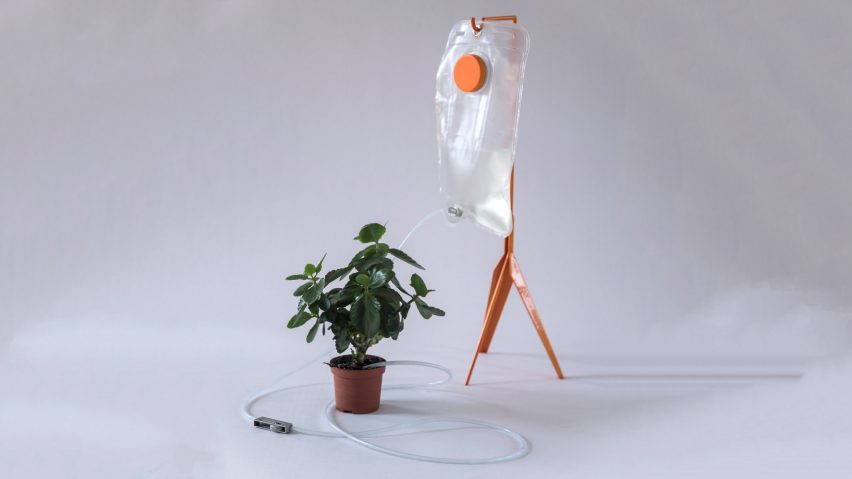
Picture via dezeen
Nutrient Film Technique
With the nutrient film technique, we use again a reservoir of water, but this time we are pumping it into a grow tray that has been set up at a slight angle. Doing it this way means that gravity takes care of getting the nutrient-rich water from one end of the tray to the other, where it will then drain back into the reservoir. Because of the design, this system is best used for plants with a smaller root system. The NFT setup is an active system.
The plants in the NFT system only have the ends of their roots touching the water, so as to keep the roots able to take in precious oxygen, which helps the growth. Because the system only uses a little water at a time, the plants are never drowned in the water.
Because of the way the plants are positioned, it is very easy to check the roots for disease in the NFT system. The use of a reservoir of water that feeds back into itself reduces the overall waste of water and the design of the system makes it easy to scale the project up or down depending on the size needed. Plus, unlike deep water cultures, it can be fairly easy to get the pH levels right using an NFT setup.
However, the NFT also relies on a pump and so the risk of pump failure and the decimation of your crop is still a possibility that one has to look out for. Because of the way the roots are slotted into the system, they can block up the flow of water. This is why plants with a large root system like carrots aren’t a good fit for the NFT system.
Because the roots are not actually in a growing medium like the other systems we looked at, this means that top-heavy plants don’t work here either. However, leafy greens like lettuce or fruits like strawberries have found great success growing through an NFT system it is one of the better indoor plant watering system out there.
Ebb and Flow
The ebb and flow system get its name from the periodic flooding and draining of nutrient-rich water. It is also known, fittingly, as the flood and drain system. In this system, water floods into the glow tray and soaks the roots of the plants. Then the water drains back down into the reservoir. Flood, drain. Flood, drain. Over and over again, hence the name.
In order to get the system to work properly, we need to set up a pump to flood the grow tray. We set this pump up on a timer rather than let it constantly flood the grow tray and drown the plants. An overflow tube is set up in the grow tray so that the water drains back down into the reservoir. Depending on how we set it up, we might even include an air pump to make sure that the roots are getting the oxygen that they need.
The nice thing about the ebb and flow system is that it doesn’t cost a lot to get started, as the materials aren’t particularly hard to get a hold of. This system makes sure our plants are getting enough nutrients without drowning due to the easy to build a structure. Once the system is set up, the hardest part of running it is out of the way. The ebb and flow system is able to run by itself once set up but you should still do maintenance to ensure everything is working properly.
Again, this system uses a pump, which means it can break and broken pumps are notorious for killing off entire gardens. If the structure fails to drain properly, the plant’s risk drowning and the pH levels in a broken system can be harmful to the plants. This is important to know because this system is prone to breakdowns and so we have to understand which areas a breakdown affects most.
One of the coolest things about the ebb and flow system is that it can be set up to allow just about any kind of plant or vegetable. Not so much the plants that prefer a dry system, but the size is not a concern here the way that it was in the nutrient film technique setup. Because of how easy it is to build the structure, we can alter it to fit the needs of our plants rather easily.
Wicking
Out of all of the systems we have and will look at, wicking is the easiest. It is so easy, in fact, that it is often recommended as an entry point to indoor gardening. Wicking is a passive system with very few parts, and there are no water pumps in it.
In this system, we once again fill a reservoir with water and keep it beneath a grow tray. This time, however, we don’t use tubing to get the water to the plants, but rather we set up a wicking material (like a rope). This wicking material is placed into the water and threaded up into the grow tray. Our grow tray is filled with a growing medium that is good at absorbing and keeping water because this system works very slowly. Water travels the length of the wick to slowly feed the plants.
This system is great for its simplicity and can serve as an easy way to start getting into indoor gardening. It is also an inexpensive system, making it that much easier for the novice grower to invest in. Because there is no pump to break down, this system isn’t at risk for a premature death the way pump-based systems are. The lack of a pump also means that this system doesn’t use up electricity and it can be refreshing to those worried about the size of their power bill.

Picture via Youtube
However, despite its simplicity, there are still downsides to the wicking system that we have to consider. The system is inefficient at delivering nutrients, so plants that need a lot of water and nutrients aren’t a very good match. The system can also see a toxic build-up of nutrients in the growing medium if we are not careful to observe how much water is getting in and being used.
Because of the lower water levels in wicking systems, they are best used for small plants. Lettuce, succulents, cacti and the smaller of the herbs make good fits for a wicking system but water-hungry plants like tomatoes would absolutely hate a wicking system. For this reason, the wicking system doesn’t offer nearly the same variety as other systems. But that lack of variety is made up for by the ease of setup, making wicking a great system for those first trying their hands at indoor gardening.
Aeroponics
Saved the most complex for last. Aeroponics does away with the growing medium and instead leaves the roots of the plants exposed to more oxygen and so this system tends to see faster growth.
In this system, the roots of the plants hang down in the open air of the container in which the system is built. At the bottom of the system is our reservoir of nutrient-rich water. However, the roots don’t dangle down into the water this time. Instead, we use a pump from the water to spray the plant roots with the nutrient solution. This pump is, of course, set up on a timer, to ensure we aren’t overfeeding the plants. This makes it so that instead of the plant spending energy to grow out longer roots in search of nutrients, the nutrients come to the roots so that the plant can focus its growth elsewhere.
This system is great for producing larger plants since they don’t need to focus on root growth. The lack of a growing medium also means that the roots don’t need to take hold; we are bringing the nutrients directly onto them. The exposure of the roots to oxygen also helps to promote growth. This means that the aeroponic system is known for producing crops with impressive yields. This system also doesn’t require a lot of space can so it can be built to be fairly mobile. Because of the lack of a growing medium, the aeroponic system is rather easy to clean.
We have to make sure to clean it because the constantly wet atmosphere of the system makes for an environment in which bacteria and fungi can thrive. The system is also very much prone to failures related to pumps and loss of power, which we’ve seen can be a major killer of our indoor gardens. The setup of an aeroponic garden also costs more than the other systems and it is the most technical of the Indoor Plant Watering System, which means the knowledge to entry is much higher as well. They also require constant supervision to protect against root diseases, fungi, and to monitor pH levels and the density of the nutrient solution.
However, this system allows for bigger yields and the system can be used to grow almost any kind of plant. This means that the variety the aeroponic system offers is unparalleled compared to the other systems we have looked at.
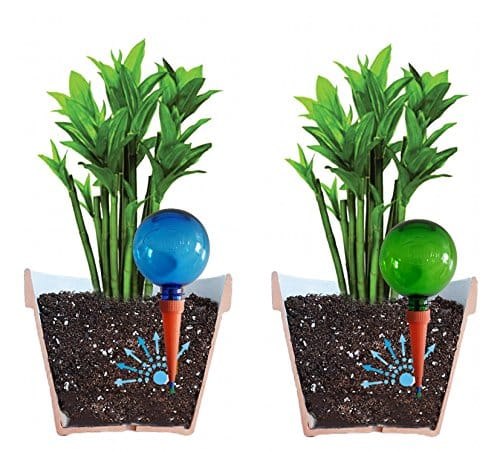
Picture via wateringmygarden
Choosing the System That is Right for You
Like many things in life, the choice of which Indoor Plant Watering System to use is a highly personal one. Each of us is after different goals with our gardens and has different skill levels when it comes to handling the technical stuff. This means that the best option available to us in order to figure out which system to use is to ask questions based around to our needs and desires, such as:
- What is your skill level in putting together handy projects? If low, perhaps beginning with a wicking system would be an ideal start.
- What kinds of plants do you want to grow? If you are looking for top-heavy and larger plants, you are going to need to use a system that can support them. If you are looking for something smaller, you’ll have more options but that doesn’t mean you should go small if what you are after is a bigger plant.
Do you have the time to invest in one of the more maintenance-heavy setups or would a more streamlined one like wicking fit into your life and gardening goals better?
Each of the setups that we have explored has been written about and explored in depth throughout the internet with many first-hand accounts of how they turned out. If one strikes you as intriguing, there is always more research that can be done to make sure that it is right for you. But one thing that stands out when you research these is that each one has been used successfully and has been demonstrated to have grown some amazingly healthy- and good-looking plants.
You know what you desire more than anyone else. Looking at the benefits, the plant types and the cons should give you a good idea of where to start. I suggest narrowing down to the couple that interests you the most and beginning from there.

